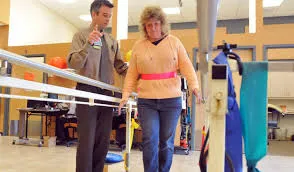Managing Symptoms of Movement Disorders with Physical Therapy

Movement disorders, such as Parkinson’s disease, dystonia, and tremors, can significantly impact a person’s quality of life. While medical interventions play a central role in managing these conditions, physical therapy provides valuable support in addressing symptoms like muscle stiffness, balance issues, and limited mobility. Here is more information on how physical therapy can aid in managing movement disorder symptoms:
Enhancing Mobility and Flexibility
Physical therapy focuses on improving mobility and flexibility, which are often affected by movement disorders. Conditions like Parkinson’s disease can result in muscle rigidity or stiffness, making daily activities challenging. Therapists design exercises that target specific muscle groups to encourage a wider range of motion. These exercises may include gentle stretches, mobility drills, or yoga-inspired techniques to reduce stiffness and promote flexibility.
Focusing on posture plays a key role in this area. Some movement disorders result in poor alignment, leading to discomfort and unequal weight distribution. Therapists work to identify posture-related challenges and help retrain muscles, enabling patients to move more efficiently. Avoiding fatigue and strain during movements becomes possible when flexibility and posture improve.
Supporting Balance and Coordination
Movement disorders frequently lead to issues related to balance and coordination. Individuals with dystonia may experience an uncontrollable tightening of muscles, which disrupts stability. Physical therapy introduces personalized strategies to address these challenges. Balance-centric activities, such as standing on one leg or practicing gentle weight shifts, gradually restore stability.
Therapists may incorporate tools like balance boards or foam pads to simulate uneven surfaces encountered in the real world. This controlled training strengthens stability in environments where falls are more likely to occur. Coordination activities, like stepping patterns or slow-paced walking drills, help patients retrain their movements. These tailored approaches aim to reduce the risk of falls and bolster confidence in everyday mobility.
Alleviating Discomfort and Building Strength
Muscle weakness and discomfort often accompany these disorders, particularly in cases of long-standing symptoms. Physical therapy addresses these concerns by introducing targeted strengthening exercises. Therapists prioritize low-impact activities to enhance muscle tone without exacerbating symptoms. Resistance bands, light weights, or simple body-weight exercises are examples of tools used during therapy sessions.
Therapists also provide techniques to minimize muscle pain and fatigue. These may include guided relaxation, breathing exercises, or the incorporation of hydrotherapy. Water-based exercises can reduce strain on joints and muscles while maintaining mobility. Strengthened muscles and reduced discomfort empower individuals to perform daily tasks, contributing to a better quality of life.
Learn More About Movement Disorders
Physical therapy is a valuable component of symptom management strategies for movement disorders. By enhancing mobility, improving balance, and addressing discomfort, therapy sessions help patients maintain independence and improve overall well-being. Tailored programs make sure that each individual’s unique symptoms and needs are carefully addressed.
Patients and caregivers are encouraged to consult qualified physical therapists for a comprehensive evaluation and a personalized plan. Integrating physical therapy alongside other medical treatments enhances the approach to managing these disorders. This multifaceted strategy supports patients in navigating daily challenges while living a fuller, more active life.





